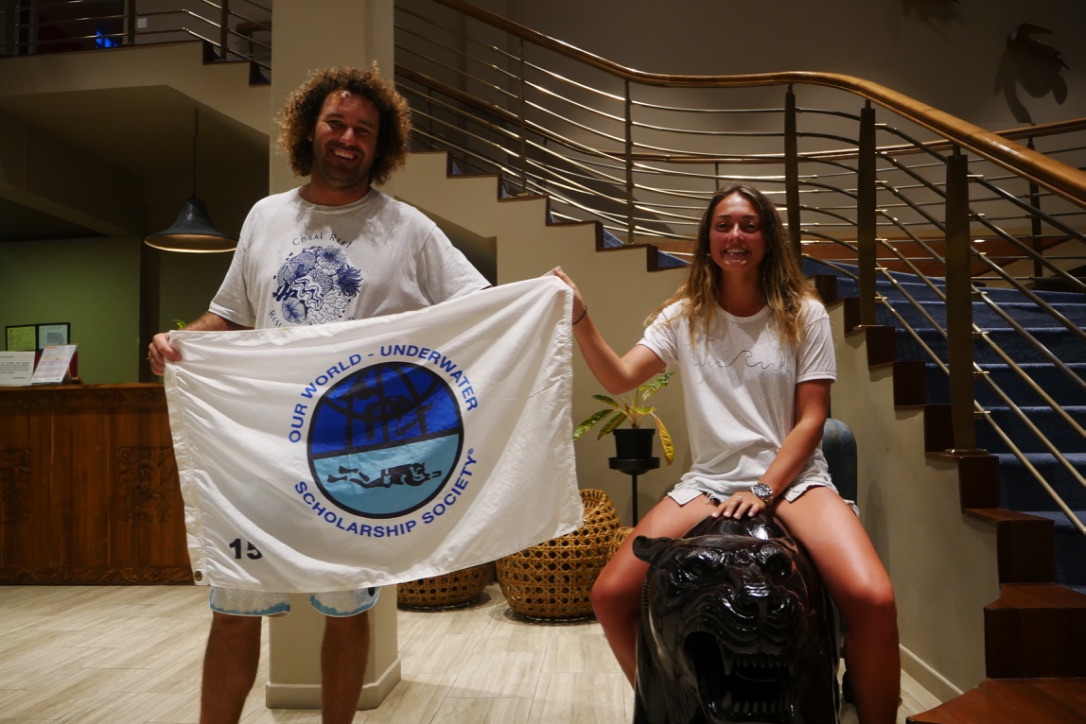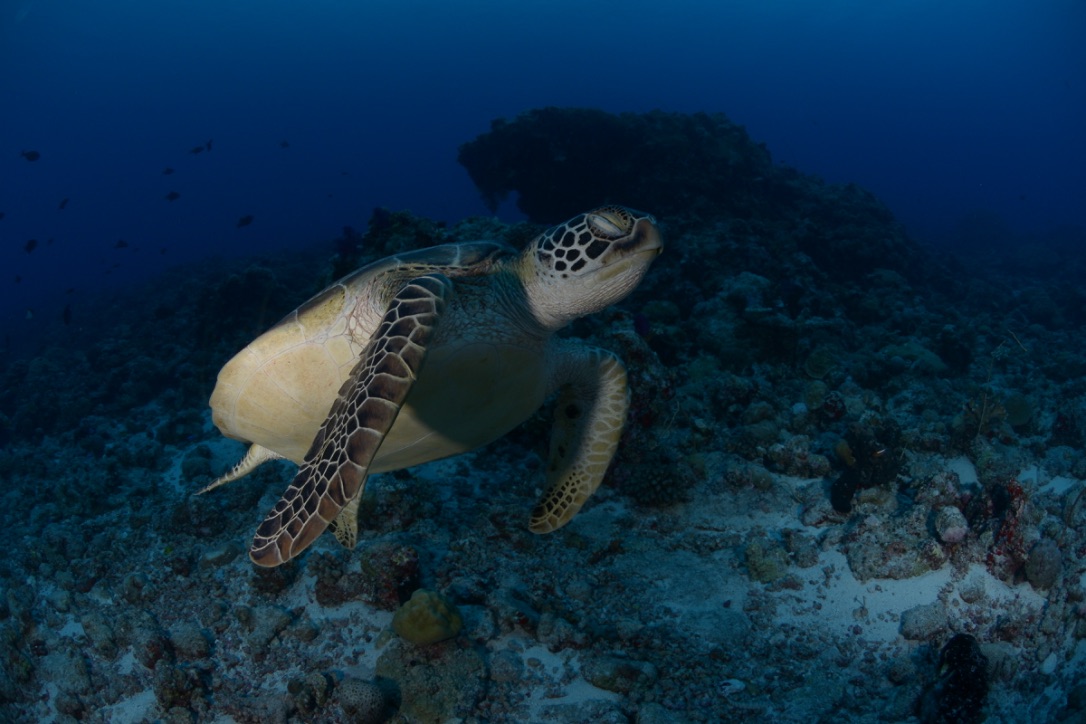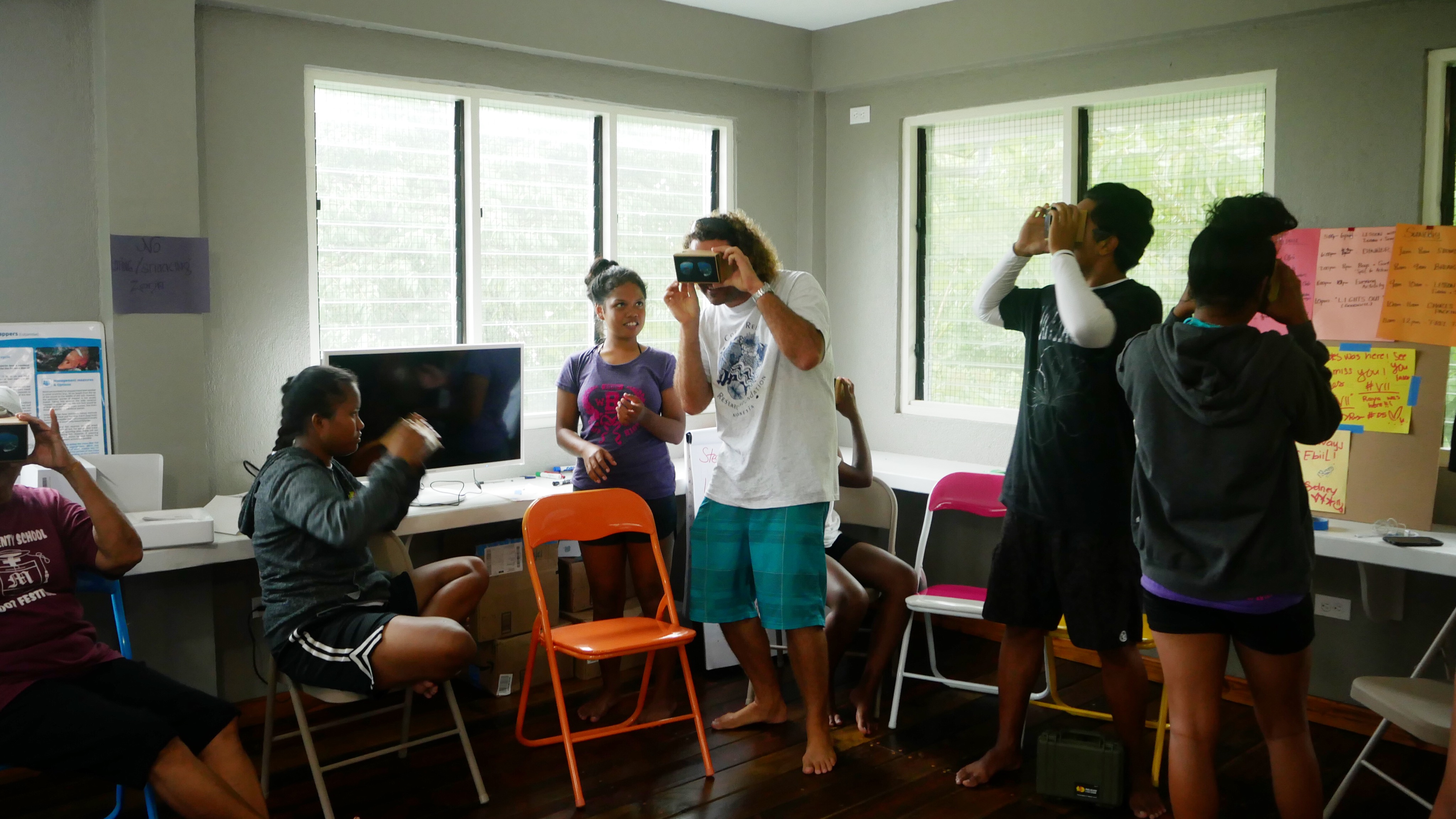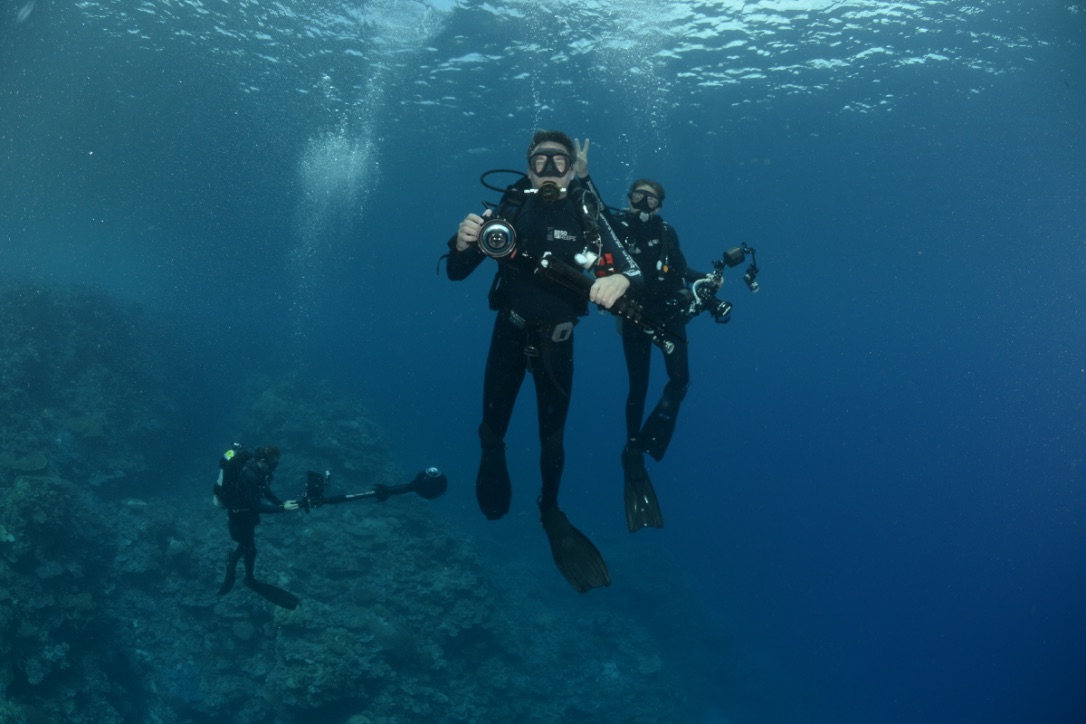For as long as I have been diving, I have dreamt of going to Palau. To me, Palau represented a potentially untouched part of the world where the reefs were still pristine, and the ocean life thriving. Often people say that nowhere on this earth is truly wild anymore, that humans have infiltrated every ecosystem, and that nothing is pure, which is incredibly true in a sense. I joined The Ocean Agency on Palau’s wild reefs to help with their 50 Reefs Project, to learn how to not only protect these ecosystems, but to inspire the surrounding communities to conserve them.
Palau was everything I imagined it to be and more. I had the pleasure of meeting the 2008 Australasian Rolex Scholar, Steve Lindfield, his partner Vanessa Jaiteh and their gorgeous baby boy Keanu. Steve and Vanessa both work for the Coral Reef Research Foundation in Palau, who so generously hosted The Ocean Agency during the trip. Steve very kindly picked me up at 2am from the airport and made me numerous cups of coffee throughout my stay, and both Steve and Vanessa cooked me some of the best vegetarian food I’ve had in my life. However, in return for Steve’s generosity I dropped his fresh bag of donut balls into the ocean while packing the boat, and didn’t tell him, because I wanted to watch him eat a salty donut ball (I ended up telling him and then eating one as well and they weren’t that bad). A few days after arriving I finally met Stephanie Roach, Christophe Bailhache and Richard Vevers form The Ocean Agency, who so generously gave so much of their time and attention to me to teach me all about their project and how to use the amazing technology they’d brought with them.

Joining The Ocean Agency on their maiden expedition for their 50 Reefs project was such a wonderful experience to be a part of. The project aims to identify and document 50 reefs that could potentially survive our planets current climate change event. It’s estimated that by 2050 we will have lost around 90% of coral reefs due to anthropogenic causes (we’ve lost 50% in the last 30 years already). The 50 Reefs project focuses on the 10% of reefs that might survive past 2050, and is working towards protecting them so that once the planet has stopped warming so dramatically, they can use the surviving 10% to regrow and regenerate coral reefs all over the world.
The reef systems in Palau that are protected are incredible. I have never seen so many fish in my life, and the abundance of large predatory fish there is an undeniable sign of a healthy reef. I was incredibly lucky to witness the Lutjanus bohar spawning aka the two-spot snapper spawning event, which occurs each month on a full moon with Sams Tours Dive Centre. The snapper aggregate quite far off shore, and their numbers range well into the thousands. They form highways of fish, streaming in from the blue to shallower and clear water, where they form smaller groups within the large group. Each small group has a lead fish which will shoot towards the surface, followed by the rest of its group, all rubbing against one another and releasing their gametes into the water column. Oceanic blacktip sharks, Carcharhinus limbatu, and bull sharks, Carcharhinus leucas, patrol the edge of the aggregation, waiting for their chance to snatch a stray fish. We were ridiculously lucky on my first dive ever in Palau to witness an oceanic blacktip take a snapper right underneath us; I’ve never squealed so loudly into my regs before in my life, it truly was a dive on the wild side.
The trend of squealing with delight into my regs continued throughout the week, as I began diving with The Ocean Agency on some of Palau’s most famous reefs, such as Blue Corner. I’d never dived in current before, and had no clue what to do with the reef hook that was handed to me, but I learnt fast, and hooking onto the reef and floating in the current while reef sharks cruised all around me was an exhilarating experience. Was my hook going to come unstuck? Who knows? Was I going to float straight to the surface and be lost at sea forever? Possibly? Was I having a good time? You bet!

Photo by Richard Vevers
These pristine sites were documented by The Ocean Agency during the dives using their 360 degree camera setups. Christophe used a setup called the SVII, which consisted of three cameras inside a housing, which he was able to control using a tablet (also in a housing), allowing him to take a photo of everything at the exact same time. These images could then be stitched together to create a sphere. Richard used another technique that involved a single camera on a tripod that was swivelled 360 degrees, taking a photo at each stage that could then be stitched together. Both of these techniques were used to create the virtual reality dive expeditions we would later use to show local Palauan’s what their reefs looked like.

Photo by Richard Vevers
Going to local villages and showing the communities what their ocean looks like deep down under that gorgeous blue surface was easily my favourite part of the project. The first village we visited had a group of young children and their families waiting for us. The kids were incredibly excited about going on a ‘virtual dive’ and as soon as they held the devices up to their eyes, they were ecstatic. There was so much yelling with excitement it was hard to talk to them about what they were seeing until they had calmed down a little bit. Teaching the younger generations about how precious these ecosystems are is so incredibly important, and knowing that we had inspired a group of 20 young children to get in the ocean and appreciate its beauty was one of the most rewarding moments of the trip. We also visited a group of high school students, and had plans to take them snorkelling, however the weather had other ideas, and the torrential rain prevented our little swim from happening. However, we took the students on the next best thing, a virtual dive. The reaction from the high school students was substantially different. They were completely fascinated, and questions involving conservation and how they could help quickly arose. It’s these moments that I will treasure forever, because I know I’ve helped inspire the current youth, our future leaders, to want to help be part of the change.

Photo by Richard Vevers
For me, educating others about our environment has always been something that I have been incredibly passionate about, so combining my love for coral and education was a dream come true for me. Palau opened my eyes to the diverse role technology can play in saving our reefs. I often feel technology is the reason we ignore a lot of pressing environmental issues, we are either desensitised to all the destruction, or it’s just easier for us to scroll past news that makes us feel sad. Immersing these groups of children completely and utterly in the ocean using technology gives me so much hope for the future, and a new found respect for the role that technology has to play in conservation and science.

I can’t wait to watch The Ocean Agency grow and inspire others, just as they inspired me; I am incredibly grateful to have been given the opportunity to be part of such an incredible team.

Photo by Steve Lindfield